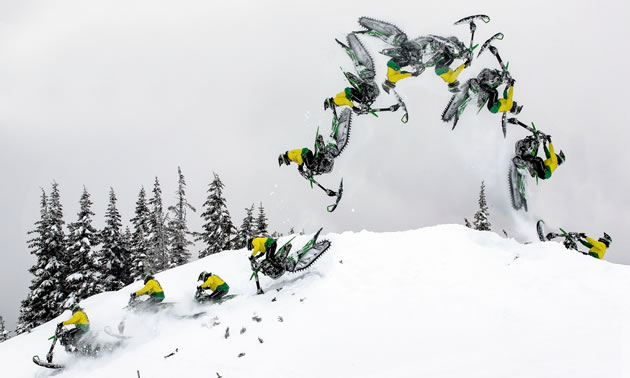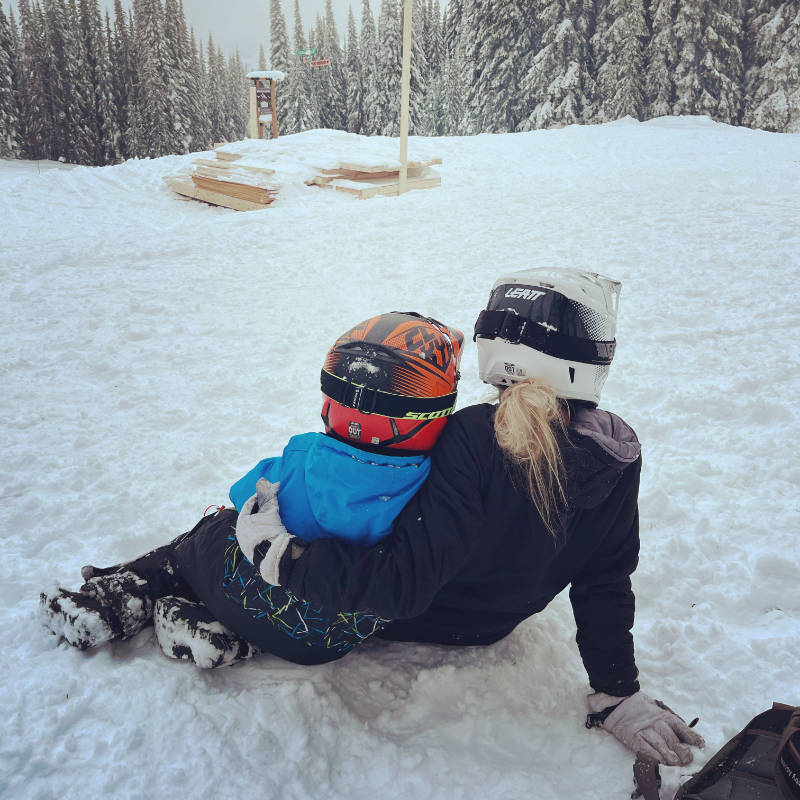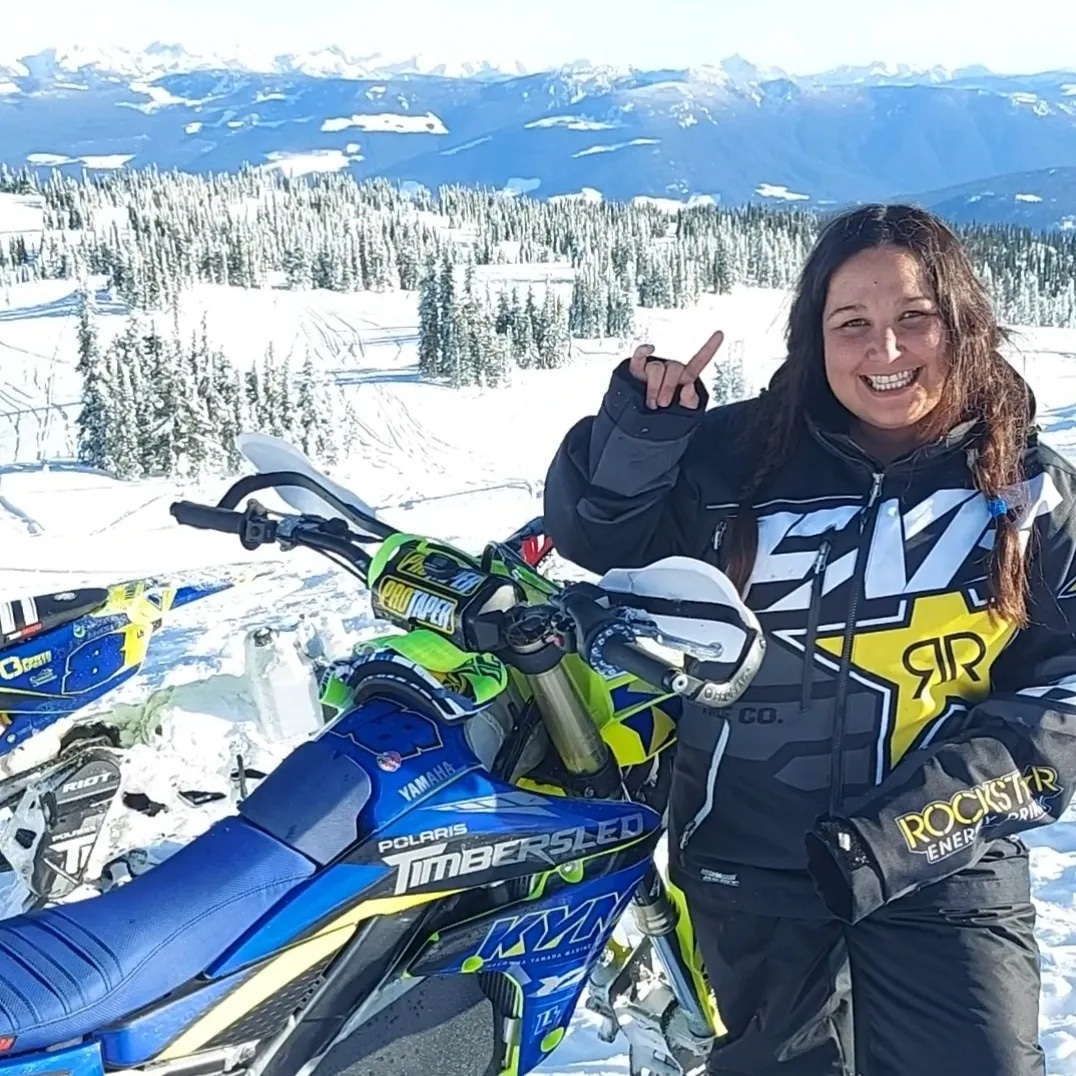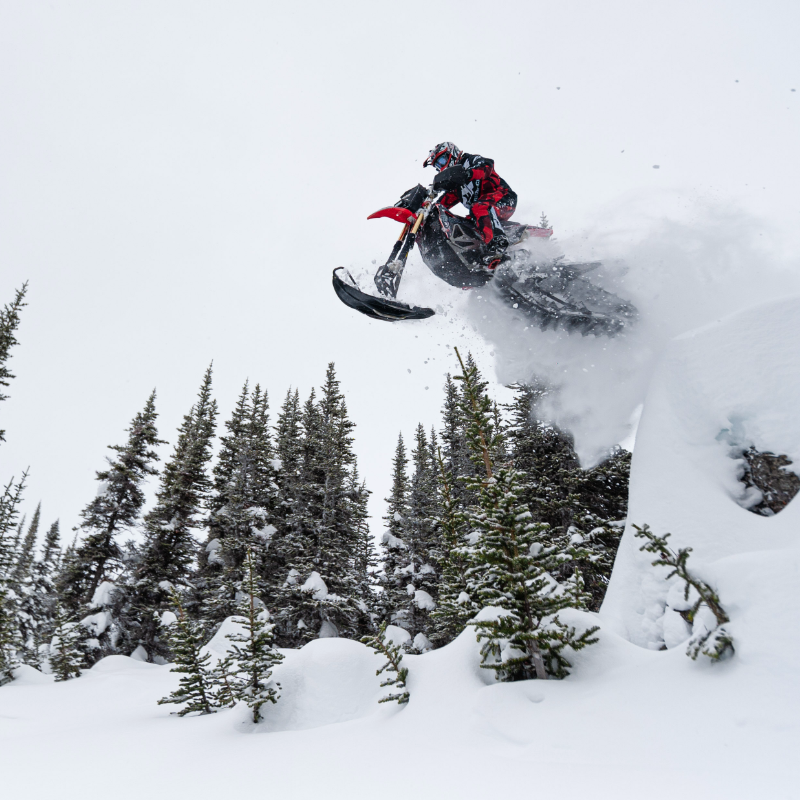Brett Turcotte is a household name in backcountry snowmobiling. Last winter, though, he permanently inked his name in history by becoming the first person in the world to backflip a snow bike. And not just any snow bike, but the made-in-Canada Yeti Snow MX.
This winter will again see Turcotte aboard his KX450 with a 2017 Yeti 120 kit. He’ll also be rocking a 2017 Yeti 129—a spare, he said, for new riders who want to see what these kits are capable of.
“For me, it’s going to be about showing people why it’s the best product in snow biking,” said Turcotte.
Bolt on and go is the intention, but according to Turcotte, there are a few things you might want to do to your bike to make it even more shred-worthy.
Most important is maintenance. Before you head out on the snow, check and adjust your bike’s valves and change the oil. Throughout the winter as well, you should have and keep to a strict maintenance schedule.
Because a snow bike kit changes the geometry of a bike, adding stiffer fork springs might be a good idea. Before you do, Turcotte said, you can try cranking up the compression clickers to make the forks as stiff as possible. If your bike is newer, it may have air forks, so you can also try bumping up the spring rate with an air pump.
“If that still feels a bit divey,” he said, “then contacting a suspension revalving company would be the next step.”
Snow and moisture getting into the engine is another concern that some riders will address by running a prefilter over their bike’s air intakes. Yeti has its own snow air intake system that is the cleanest and most efficient option Turcotte has seen.
Wider foot pegs to accommodate snow boots are another optional modification but other than that, you should be ready to rip.
When you do get out there, don’t expect to be taking jumps and doing drops the first day. It can take some getting used to, even if you are a pro.
“For me, it took three or four solid days in a row to really feel comfortable and feel one with the bike,” said Turcotte. “It definitely is a lot different than snowmobiling and it’s a whole new learning curve.”
But that’s what attracted him to the whole snow bike scene.
“For me, it’s great because when the snow isn’t awesome on a sled, it’s still really good for a bike,” said Turcotte.
It seems a new chapter is always unfolding for this daredevil, so you’ll want to keep a close eye on him and the Yeti Snow MX team this winter.







